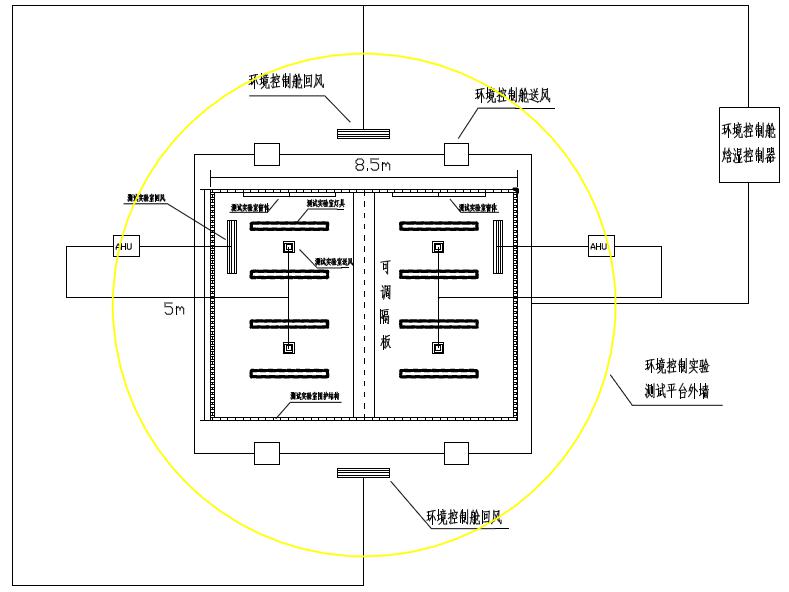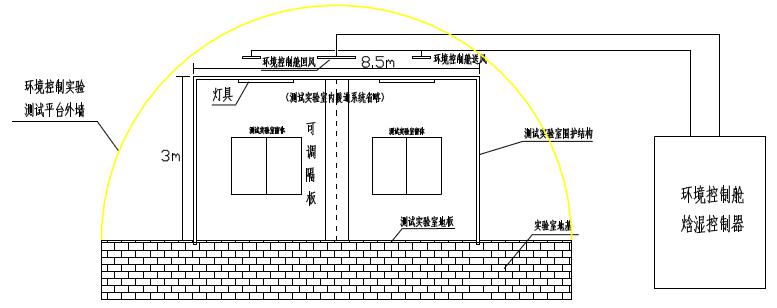The laboratory has two comparison test benches, where the effects of various energy saving measures can be compared. The total length of the laboratory is 8.5m and the total width is 5m. The envelopes, floors, windows, HVAC systems, and indoor lighting fixtures on both benches can be removed to accomodate the requirements of different energy-saving product technologies. The following figure is a top view and a schematic view of the test platform.
The shell of the test facility is a glass cover with a radius of 9m, which encloses the test bench in a confined space. The natural light can transmit through the glass cover, which enables the test of solar performance. The glass cover also isolates the internal test bench from the external environment and provides the required artificial climatic conditions for the internal test bench through cooling and heating equipment. The external humidity control units control the temperature and humidity requirements required for the experiment. The setting can meet the requirements for energy efficiency testing in different climatic conditions.
The laboratory has two comparison test benches, where the effects of various energy saving measures can be compared. The total length of the laboratory is 8.5m and the total width is 5m. The envelopes, floors, windows, HVAC systems, and indoor lighting fixtures on both benches can be removed to accomodate the requirements of different energy-saving product technologies. The following figure is a top view and a schematic view of the test platform.
The shell of the test facility is a glass cover with a radius of 9m, which encloses the test bench in a confined space. The natural light can transmit through the glass cover, which enables the test of solar performance. The glass cover also isolates the internal test bench from the external environment and provides the required artificial climatic conditions for the internal test bench through cooling and heating equipment. The external humidity control units control the temperature and humidity requirements required for the experiment. The setting can meet the requirements for energy efficiency testing in different climatic conditions.
The laboratory has two comparison test benches, where the effects of various energy saving measures can be compared. The total length of the laboratory is 8.5m and the total width is 5m. The envelopes, floors, windows, HVAC systems, and indoor lighting fixtures on both benches can be removed to accomodate the requirements of different energy-saving product technologies. The following figure is a top view and a schematic view of the test platform.
The shell of the test facility is a glass cover with a radius of 9m, which encloses the test bench in a confined space. The natural light can transmit through the glass cover, which enables the test of solar performance. The glass cover also isolates the internal test bench from the external environment and provides the required artificial climatic conditions for the internal test bench through cooling and heating equipment. The external humidity control units control the temperature and humidity requirements required for the experiment. The setting can meet the requirements for energy efficiency testing in different climatic conditions.

